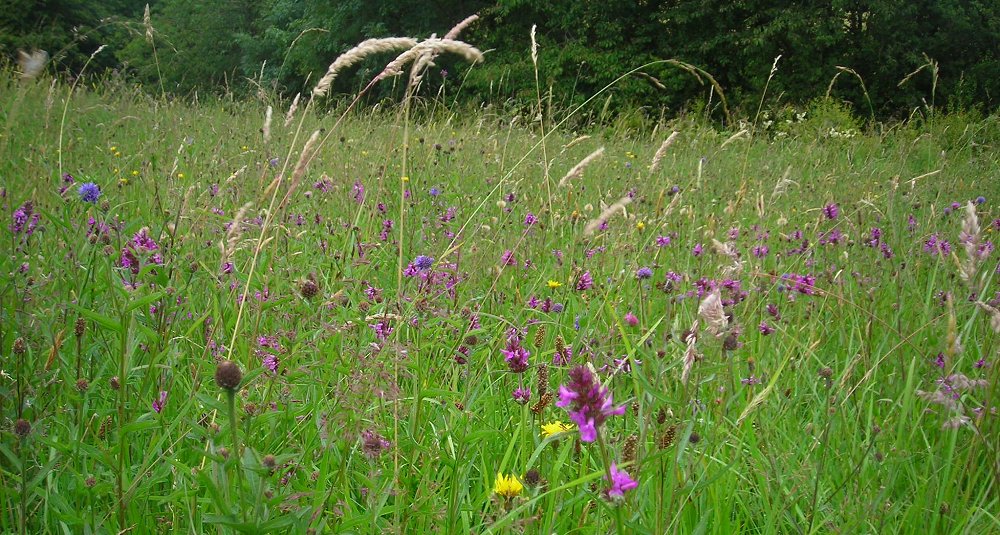
Back to the Index page
(Species lists below)
Six members attended this outdoor meeting on an afternoon which was not favourable for butterflies, which was to be the main theme. There had been frequent showers in the morning and the skies remained overcast. Bull Ings SSSI consists of two wild flower meadows accessed via a bridleway from Cropton village. The meadows are damp in places, very dry in others, acidic in part and calcareous elsewhere, the result being a broad mix of flora. The Yorkshire Wildlife Trust, who manage nearby Appleton Mill Farm, now graze this site although they are not responsible for its management. It is scheduled to be grazed by cattle later in the season.

The site was last visited by Ryenats towards the end of June 2012 and on that occasion we recorded 108 flora species. We have added to this list over the last few years as members regularly visit this site, and today’s visit added more. The list now stands at 127. These additions are not necessarily new plants at the site but more likely to have been missed on previous visits. This certainly applies to nettle, hedge woundwort, common mouse-ear, large birdsfoot trefoil and spear thistle and probably the grasses. It should be stressed that on this visit we did not account for all the plants on the list.
This visit was slightly later than that in 2012 and we were therefore able to see the good spread of betony, greater burnet, agrimony and devils bit scabious in flower. We also noted a pink form of this latter plant; previously we have also noted a white form here. The locally rare pepper saxifrage was also in flower and common knapweed was only just starting to show.
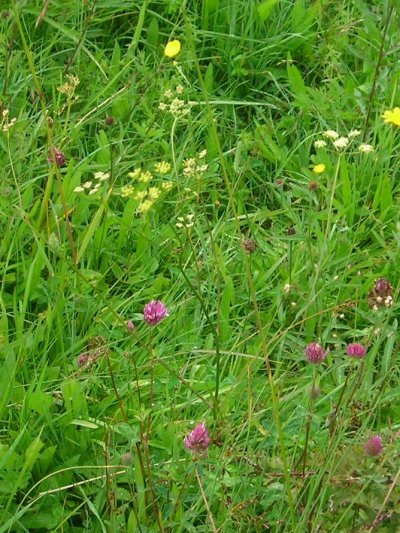 Pepper saxifrage Silaum silaus in meadow |
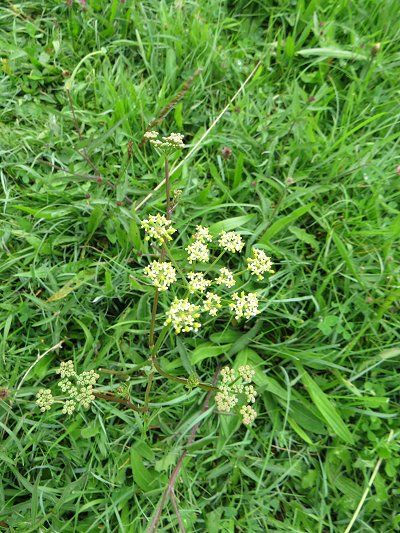 Pepper saxifrage Silaum silaus close-up |
Five orchids are knnown at this site. Early purple orchid was not seen as it was well over and there were only a few common spotted orchids still in flower, the vast majority of these were over as were the abundance of common twayblades although there were some still flowering. Fragrant orchids were still flowering. There were about 20 found, in three groups in the first field and one lone one in the second. Alas, we found no bee orchids this time. In 2012 there were 23 present but since then only an odd one.
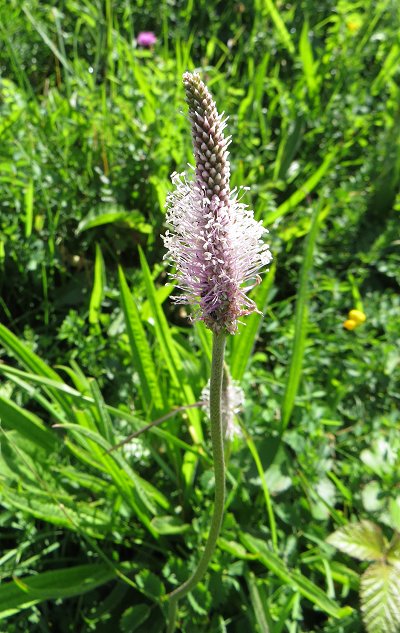 Hoary plantain (above) and Fragrant orchid (right) |
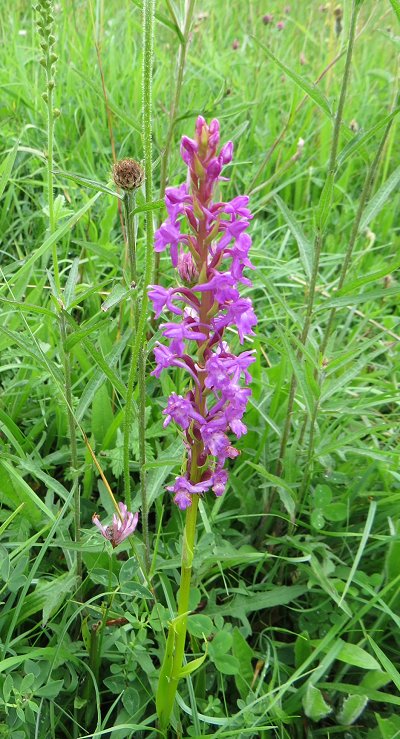
|
It was good to see hoary ragwort here, usually found at coastal sites but inland it is found on calcareous soil. Just a very small patch which may not survive being pulled ready for when livestock come in to graze. The few plants of hoary plantain were just getting beyond their best.
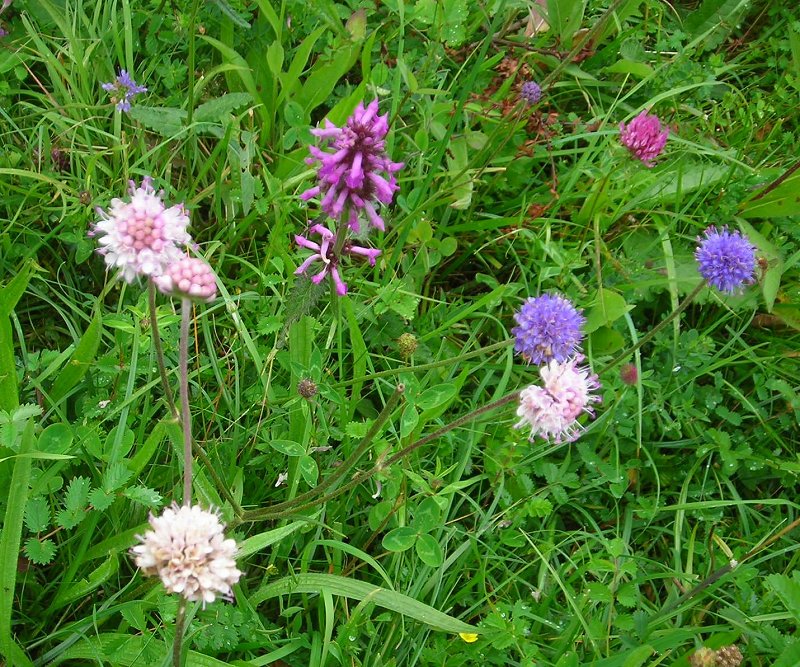
Betony and devilsbit scabious including pink form |
The weather precluded seeing an abundance of butterflies but we did manage to see meadow brown, ringlet, small skipper and large skipper. A few whites were on the wing but these were not close enough to identify. There were still good numbers of both narrow-bordered five-spot and six-spot burnet moths. Other moths included Shaded Broad-bar Scotopteryx chenopodiata, Udea lutealis and Agapeta zoegana (only 34 records for VC62 with the nearest at Pickering in 2010 and possibly caught in Mick and Ellen Carroll’s garden as they are listed as the observers).
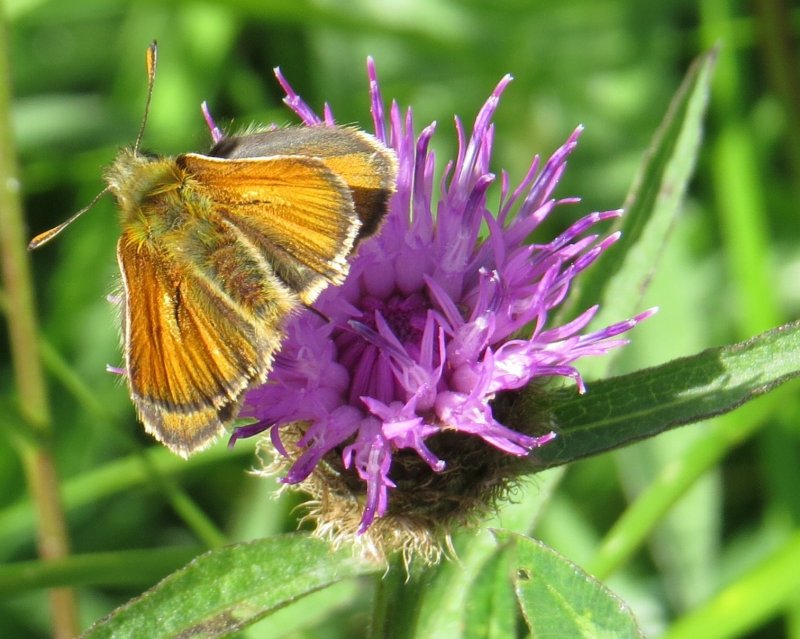 Small Skipper butterfly |
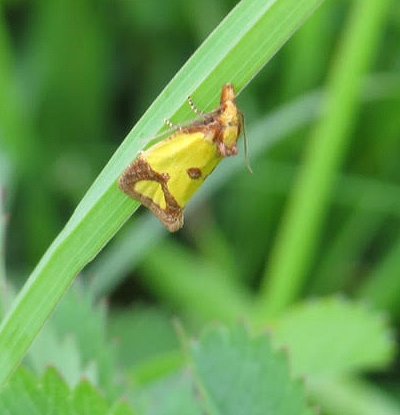
The micro-moth Agapeta zoegana which is about 8mm long (above) Four-spot orbweaver spider (right) |
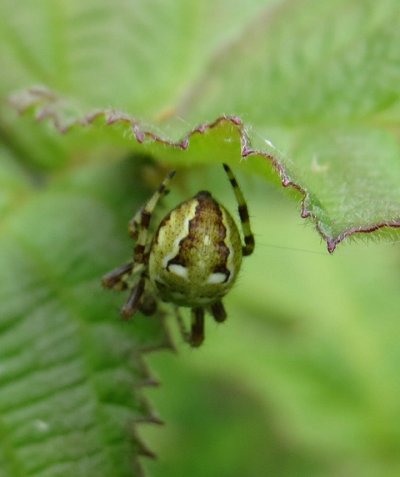
|
There were a large number of the Nursery web spider Pisaura mirabilis. The female carries her eggs with her until they are about to hatch when she then constructs a tent-like web in the vegetation and the young stay here until they disperse. It was possible to see the young spiders within the webs. A juvenile four-spot orbweaver spider Araneus quadratus was observed wrapping its prey.
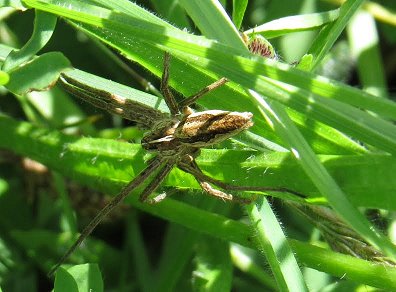 Nursery web spider (above) Web for spiderlings on red clover (right) |
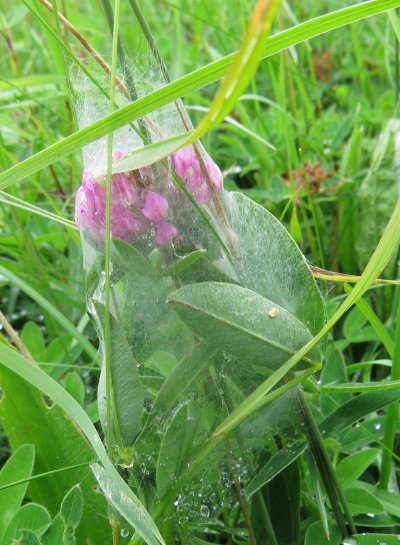
|
There were not a great number of birds but the highlight was the whitethroats, there being at least two family groups here.
The meeting finished at 4.30pm with butterfly buns.
Buzzard, chiffchaff, bluetit, jackdaw, whitethroat, wren.
Common Froghopper Philaenus spumarius, Leafhopper Cicadella viridis, Common green grasshopper Omocestus viridulus, Soldier beetles, Harvestman Lacinius ephippiatus (uncommon), Hoverflies including the marmalade hoverfly and a number of bumblebees including the red-tailed bumblebee Bombus lapidarius.
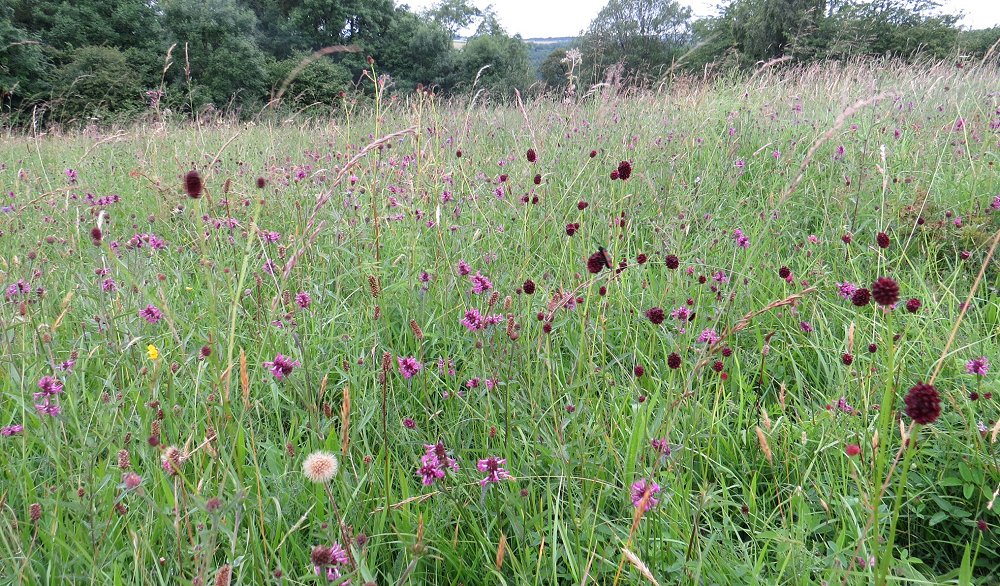
Part of the meadow including betony and greter burnet
Here is the plant list, which we will continue to update:
| © Ryedale Natural History Society 2017, Photos © Jayne Smith, Jim Pewtress, Gill Smith 2017 |